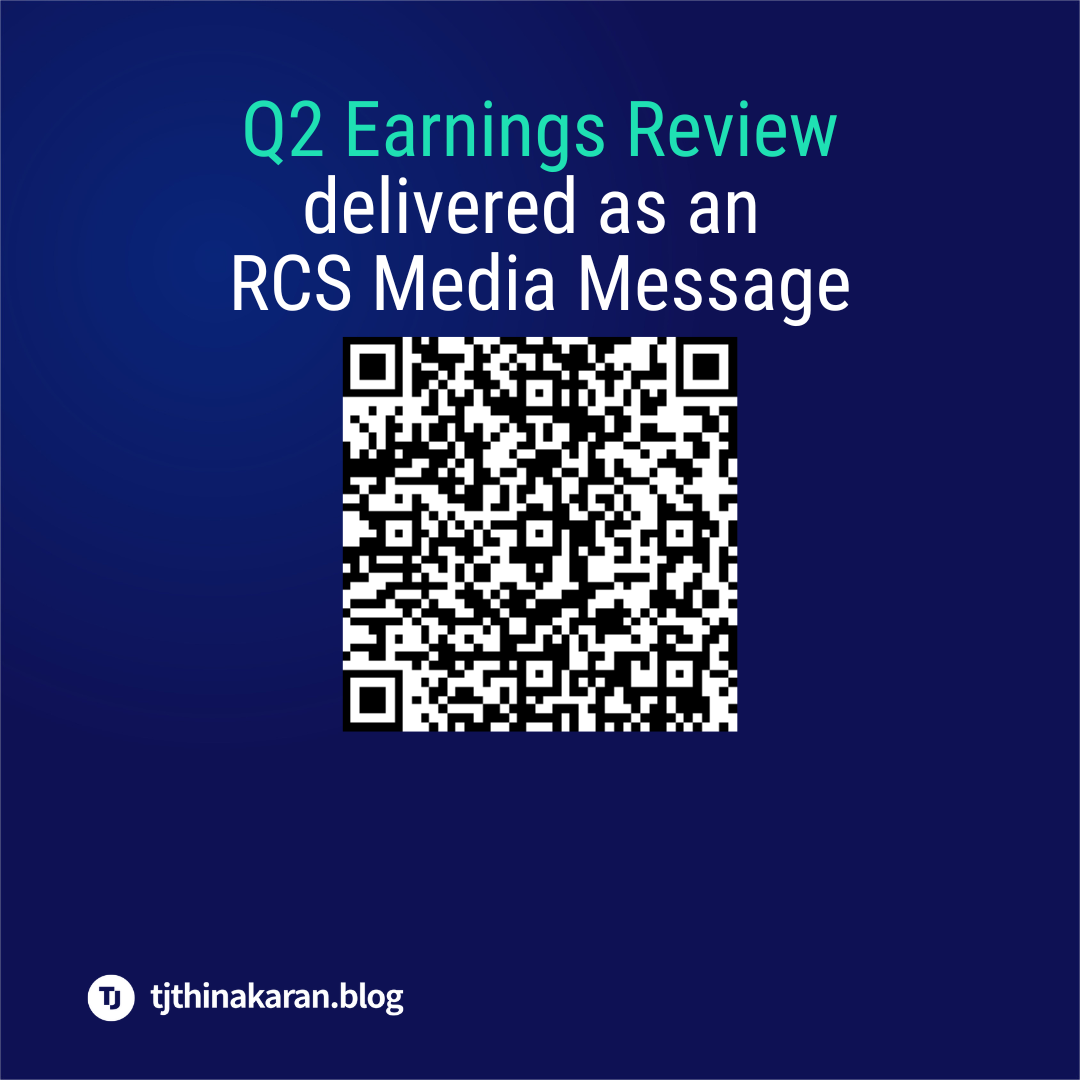Apple Mutes the Inbox; RCS Builder’s Log Tries a Podcast; and Rajdip Gupta on Durable Growth
Endurance means staying visible, adapting fast, and scaling slowly.
In this week’s newsletter:
Apple’s Unknown Sender Problem
The messaging app upgrade for iOS 26 is causing blowback—especially in business messaging circles. It’s a long-awaited feature, rolled out in a way that leaves many scratching their heads.
At the center is Apple’s decision to auto-sort texts into “known senders,” “unknown senders,” and “spam.” It sounds self-evident, even harmless. Email clients do it, so why shouldn’t messaging apps? But Apple’s implementation won’t solve spam and may even end up hurting the very consumers it’s meant to protect.
How It Works
If a number is in your contacts or if you’ve had a conversation with that number before, it will get put in your known-senders list. You’ll also get notified. If the number is not classified as spam, then it’ll be “unknown” and will not generate a device alert. The alert suppression is the real problem.
Apple has a significant spam problem, especially on the iMessage platform. But this fix feels reactive. Rather than address root causes, Apple appears to have pushed out a blunt solution with little testing of how it affects important, even time-sensitive, notifications.
Personal Research
I’ve been on iOS 26 beta, and brands that have texted me for years are now tagged as “unknown.” I was testing RCS features and assumed it was a beta quirk. Then I decided to run some numbers.
I went back to my unknown senders for a month. And out of the sixty-three messages in my “unknown” tab, 34% of messages were spam but were wrongly classified as “unknown.” Almost 56% of messages came from known brands but were wrongly tagged as “unknown.” Only 10% of the numbers (six messages) were truly unknown senders, i.e., first-time messages that were not spam.
How It Fails
If a number is not in a phone’s contacts list, Apple seems to require a prior two-way interaction—an actual reply—before classifying a sender as “known.” That misses the reality of business messaging.
Business messaging is wanted. It’s opt-in, permission-based, and often essential. Apple’s implementation seems to disregard that relationship entirely—treating all unknown senders the same, regardless of consent or context.
You rarely respond to a pharmacy pick-up notification with “Thanks” or to a bank transfer notification with “Got it.” I have brands in my inbox that I’ve never texted back, and yet they are very much wanted messages.
While Apple’s auto-categorization has become a meaningless classification riddled with false positives, its alert suppression is the real risk.
Once labeled as “unknown,” the message sender has been muted. The alert never comes. That breaks the core value of messaging—not just for one-time passwords or shipping updates but for anything that relies on timely visibility. Among the false positives in my case: a missing-persons alert from the Los Angeles Unified School District (LAUSD).
Is There a Fix?
Apple will argue the user is still in control. You can disable “filter unknown senders” in settings, and the problem goes away. But defaults matter, and iOS has become far too complex for most people to customize. Consumers lean on good defaults—and this one isn’t good.
Apple could have solved this with better domain research and deeper partnerships.
In my case, I knew the senders. Their numbers—whether short code, 10DLC, or Toll-Free—were all registered. A registered number is monitored, and monitoring creates data—data that Apple could have used. It doesn’t look like that happened.
What You Can Do
With half of US traffic coming from brands, Apple will take heat for this feature and may work with the industry to fix it. Or, it will improve the categorization over time, after a few high-profile misses with OTPs and urgent alerts.
In the meantime, there will be two predictable shifts. First, expect “Check your unknown senders tab” to become the new “Check your spam folder.” Second, more platforms will encourage users to save brands as contacts, either with one-tap/two-tap flows or pre-filled prompts.
I don’t like the idea of adding CVS or my bank as a contact just to make sure their texts notify me. That’s forced clutter. But until Apple fixes the defaults, visibility is on you. Train your customers, or risk getting muted. If you are an iOS user, send feedback to Apple about this feature. The more they hear directly from their customers, the greater the chances of a meaningful change.
Finally
Thanks to overnotification, we are desensitized to urgency. Yet text and voice are still the two notifications people pay attention to. It’s not just one-time passwords; entire customer experiences depend on being seen. This upgrade strips SMS of guaranteed attention—its one true edge.
RCS Builder’s Log: The Podcast Platform
RCS media cards can carry full podcast episodes. I tested it by turning my Q2 earnings review into a seven-minute video podcast. One scan of the QR code, and you get it right inside the messaging app.
Lesson Learned
First, GenAI continues to impress. Notebook LM compressed an 8,000-word writeup—covering Twilio, Sinch, Bandwidth, Klaviyo, Braze, LINK Mobility, Tanla, Route Mobile, and others—into something you can actually finish over coffee. Not my voice, my style, or my words, but better, and that’s the cool part.
RCS delivered it as a simple tap-to-play media card. No messy links. No handoffs.
Historical Context
Messaging has always flirted with rich media. MMS tried it, but was capped by size limits and clunky transcoding. RCS changes the game: rich media that actually works, distributed through the same channel where the conversation happens. From carousels to podcasts, it’s becoming a full-stack engagement format.
Try It Yourself
Scan the QR code, try it yourself, and tell me what you think. Or you can just watch the YouTube video.
RCS Builder’s Log is my running series of notes, takeaways, and experiments from building and deploying RCS in the wild.
Read other entries here.
Rajdip Gupta Talks Building Enduring Companies
Rajdip Gupta left IBM in the UK to return to India and build Route Mobile at a time when the startup ecosystem was still in its infancy.
Two decades later, he scaled it into a global CPaaS provider—now part of Proximus Global—while staying profitable from day one.
In this twenty-second edition of My Best Advice, Rajdip shares why scaling sensibly matters, why VC money isn’t always the right move, and why founders should focus on creating more leaders.
Thank you for reading, and have a great week!
TJ



